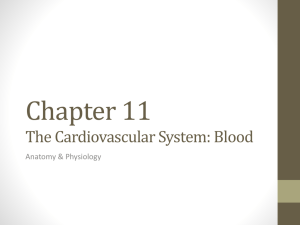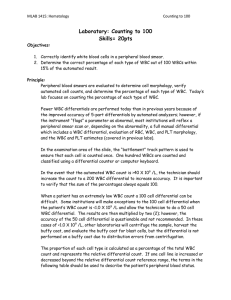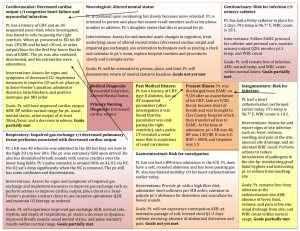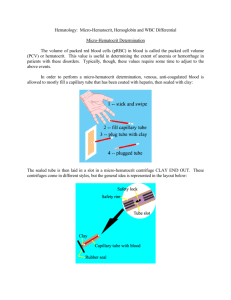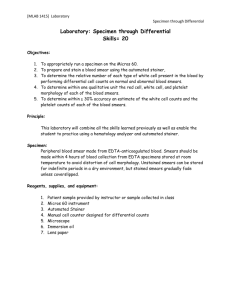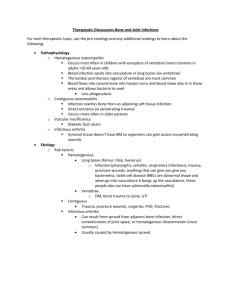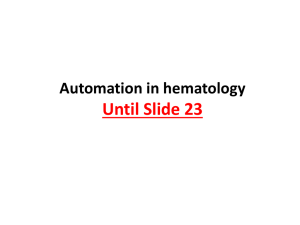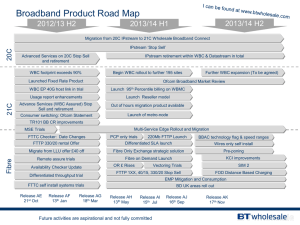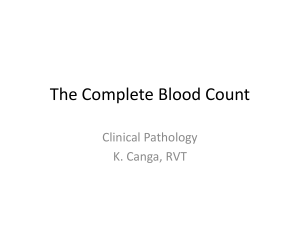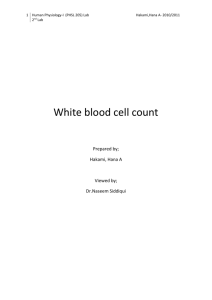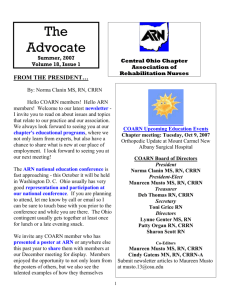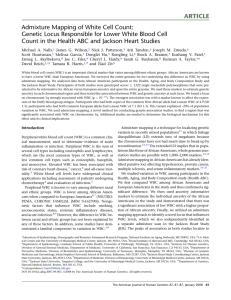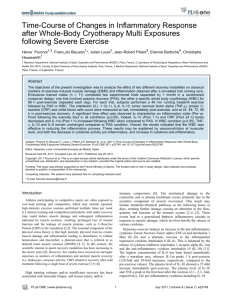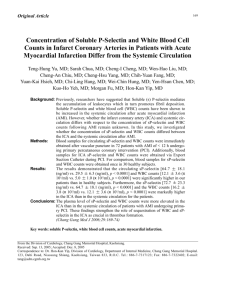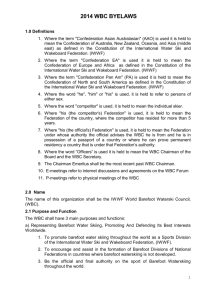White blood cell differential count
advertisement
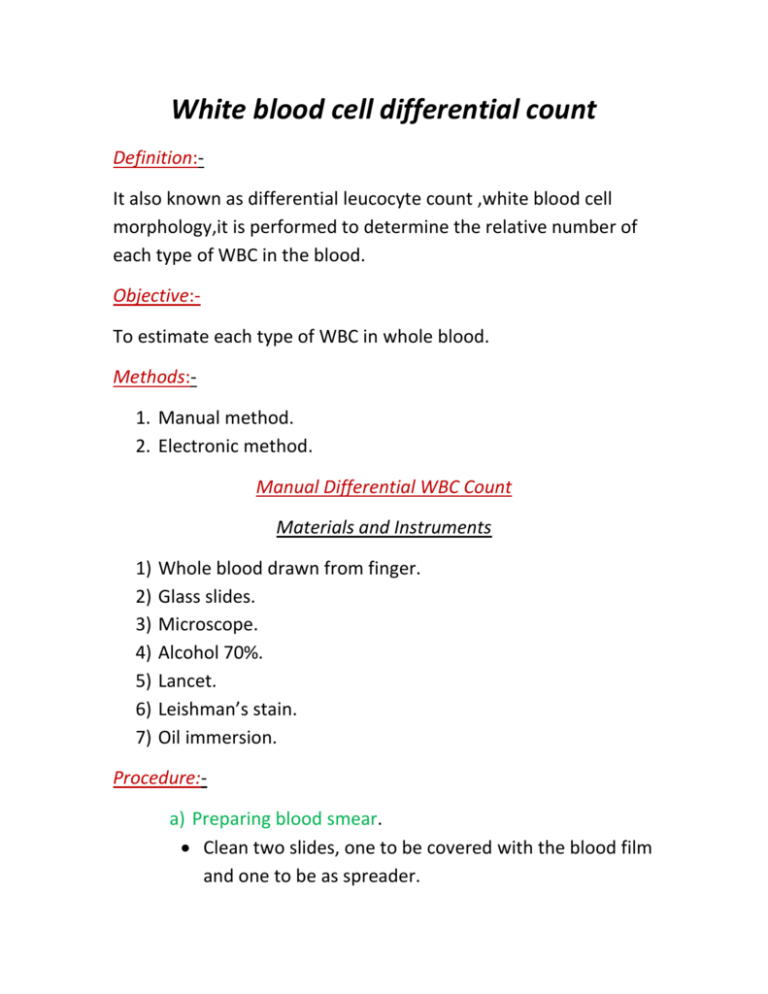
White blood cell differential count Definition:It also known as differential leucocyte count ,white blood cell morphology,it is performed to determine the relative number of each type of WBC in the blood. Objective:To estimate each type of WBC in whole blood. Methods:1. Manual method. 2. Electronic method. Manual Differential WBC Count Materials and Instruments 1) 2) 3) 4) 5) 6) 7) Whole blood drawn from finger. Glass slides. Microscope. Alcohol 70%. Lancet. Leishman’s stain. Oil immersion. Procedure:a) Preparing blood smear. Clean two slides, one to be covered with the blood film and one to be as spreader. Prick the finger with lancet to obtain a drop of blood. Make a fine touch of one end of a slide with drop of blood. Place the edge of other slide on the surface of the first one at angle of 45 degree. Draw spreader back until contact the drop of blood. Push spreader slowly to the other end of the slide. Allow the film to dry at room temperature. b) Staining the blood smear Blood smear should be stained within one to two hours. Drop Leishman’s stain on to blood film. Stay for 1-2 minutes. Add distilled water to the stain. The diluted stain should act for 15-30 minutes. Wash it with Dis. Water. Shake off excess water and allow drying at room temperature. c) Examination of the stained blood smears Put the slide on the microscope stage. Examine the blood smear using low power objective.Choose area with plenty of WBC. Place a drop of immersion oil on the selected area and use oil immersion objective. Perform the differential cell count, and examine the morphology of WBC’s. d) Calculations .Count each WBC seen and record on a dif.cell counter until 100 WBC’s have been counted. Results:The normal range of the different types of WBC is as follows :Neutrophils 62% Eosinophils 2.3% Basophils 0.4% Monocytes 5.3% Lymphocytes 30% Discussion The WBC differential assesses the ability of the body to respond to and fight infection. It also detects the severity of allergic reaction, parasitic and other types of infection, and drug reactions. It can also identify some types of leukaemia or lymphoma. The WBC differential is normally run as apart of the full blood count, which is requested for many different conditions. The results indicate the percentage of each type of WBC that is present. Neutrophils can increase response to bacterial infection, inflammatory disease, steroid medication . Decreased neutrophil levels may be the result of sever infection or other conditions such as responses to various medications or therapy. Eosinophils can increase in response to allergic disorders, inflammation of the skin , and parasitic infections. They can also occur in response to some infections or to various bone marrow malignancies. Basophils can increase in case of leukaemia, long standing inflammation, the presence of a hypersensitivity reaction to food, or radiation therapy. Lymphocytes can increase in case of bacterial or viral infection, leukaemia, lymphoma, or radiation therapy. Decreased lymphocyte levels are common in later life but can also indicate steroid medication, stress, lupus, and HIV infection. Monocyte can increase in certain leukaemias, in response to infection of all kinds as well as inflammatory disorders. Decreased monocyte levels can indicate bone marrow injury or failure and some forms of leukaemia. Thank you

